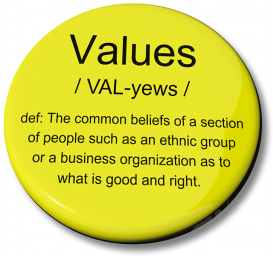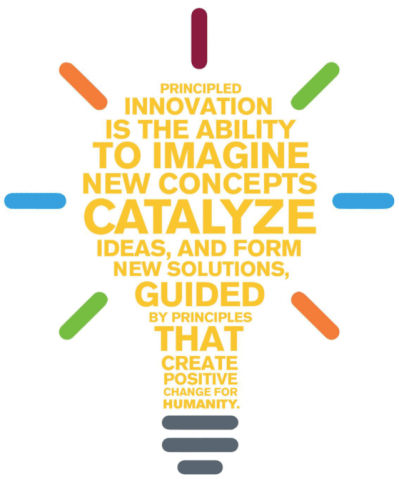
Quick summary: In which I disparage the buzzword “design thinking” even while praising the idea of design; point to the value-neutral nature of design and the need for a more principled approach, and end with a video that seeks to capture a vision of principled innovation embedded into the design process.
Design thinking is the latest buzzword in education. It has been variously described as being the new liberal arts or even your secret weapon for building a better good. Design thinking is now part of pricey executive leadership programs as much as it is part of K12 education.
I am somewhat uncomfortable with this hype for a range of reasons. The first being that design thinking seems like just another fad that educators have to deal with. And like all fads it will end and nothing would have really changed. Second, and maybe more important, is that it is increasingly clear design thinking does not necessarily leads to good solutions. Examples abound—of companies and organizations that have used design thinking to manipulate and trick users. A lot has been written about dark design or dark patterns. (I addressed some of these issues in this video, and Danah Henriksen and I have a chapter on this very topic currently in press). Along these lines, the renowned scholar of design, Richard Buchanan, had this to say:
The Holocaust was one of the most tragic, prominent products of design in the 20th century. It was designed thoroughly, but with a horrifying ethical foundation. And the fault lies in the people;
Albert Speer and his surrounding henchmen. Design and creativity are neutral tools. But people need to know when and how to use and when not to use them.” (See Henriksen, 2019, p. 26)
Let it be said again. Design and creativity are neutral tools!

And I write all this with a great love and respect for design and the design process. I have always considered myself as being a educator-designer and, more recently, I am proud to have been part of a range of projects that focus on educational innovation through design-based problem solving. As the website of the Office of Scholarship and Innovation (OofSI) says:
We believe the design process is a powerful approach to addressing challenges in education. We collaborate with partners across the education landscape to develop mindsets and cultures that value creativity and intrapreneurship–creating change and taking risks to improve an organization from within.
Our projects vary greatly, depending on need and context. (Click here for a complete list of projects we have been involved in.) One thing we have learned through our work, however, (and consistent with Buchanan”s quote above) is that design is more than just a process. It needs to be driven by an explicit commitment to a deeper set of values and ethical principles. At the heart of our work around educational innovation is the question: We can, but should we?

This has led us (working closely with another team in the college) to ground our design-based approach within a broader context what we call principled innovation. Principled innovation, in this context, is defined as the “ability to imagine new concepts, catalyze ideas, and form new solutions, guided by principles that create positive change for humanity.”

Over the past few months we have been working on developing a framework for design and principled innovation. This work was led, this past summer, by Mellisa Warr, who worked with Jennifer Stein and myself to create short videos to explain our approach. Claire Gilbert, our in-house multimedia specialist has been working on creating more professional versions of these videos, the first of which is now available. Enjoy